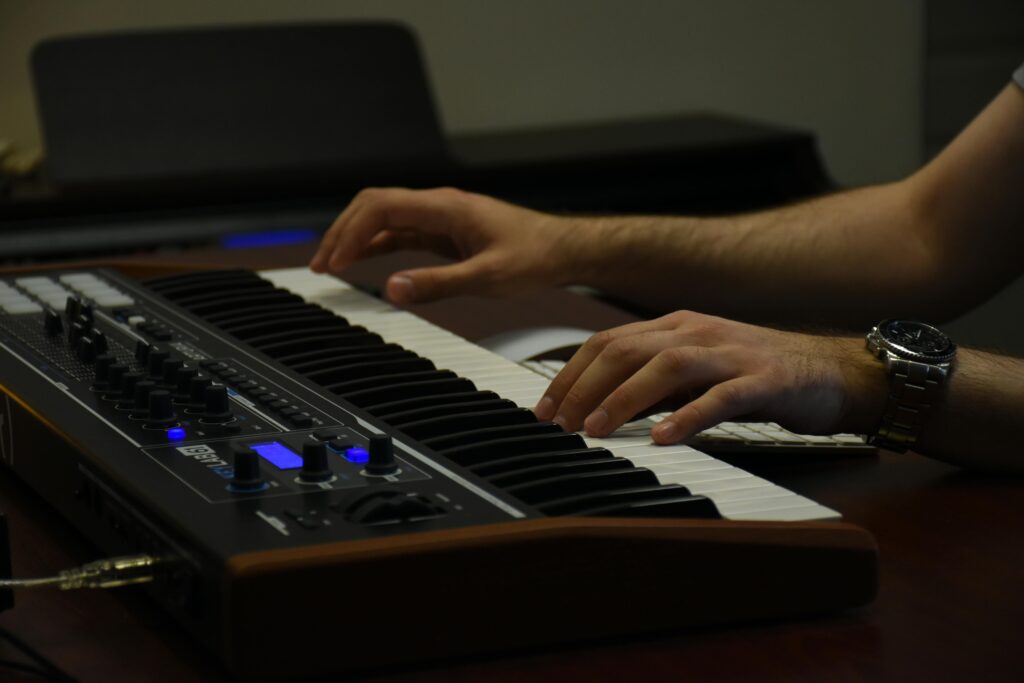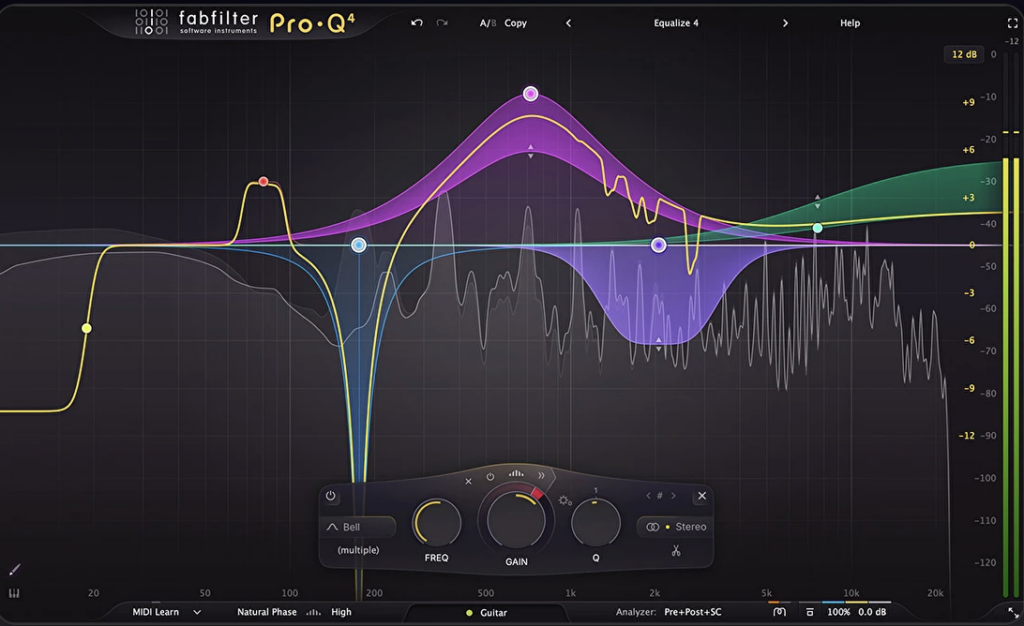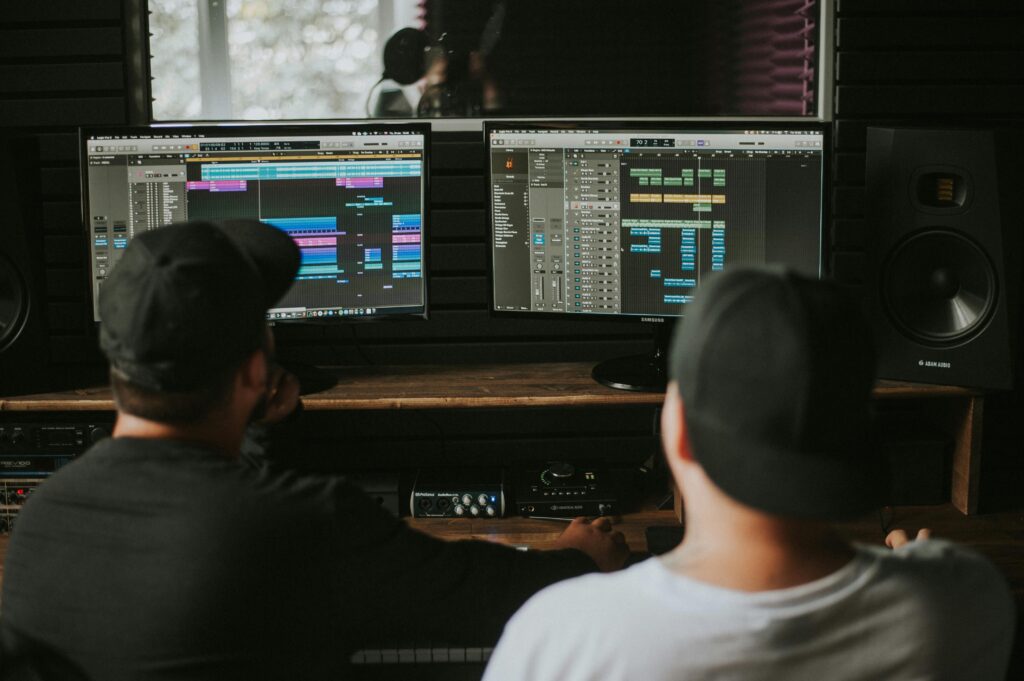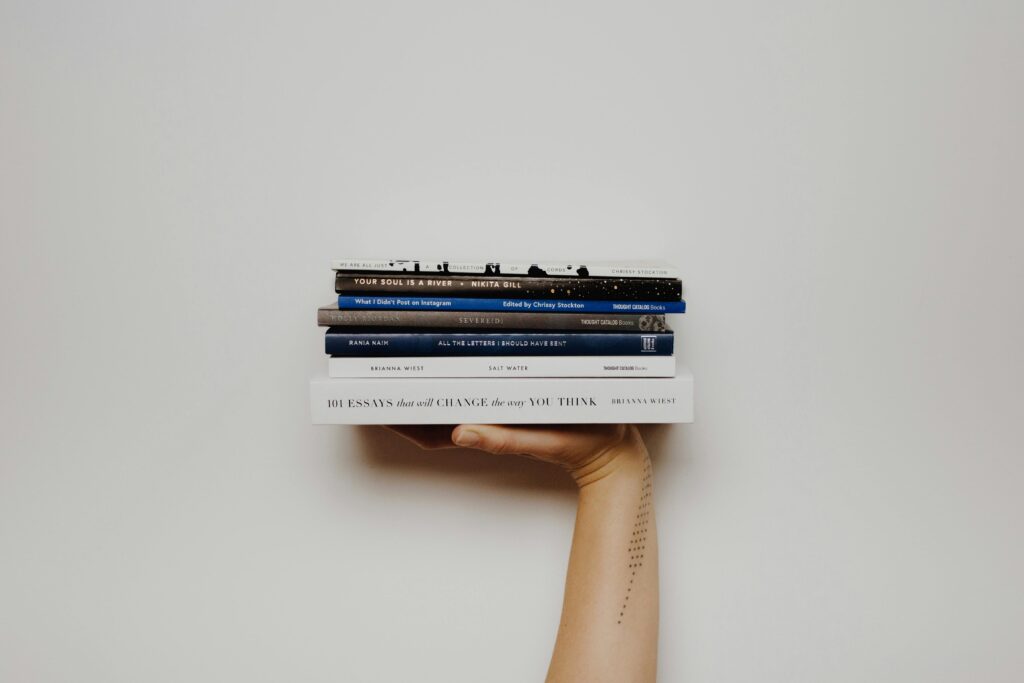Introduction
For musicians seeking to deepen their understanding and practice of meditation, a well-chosen selection of books can provide valuable guidance. The following curated recommendations offer perspectives from both meditation experts and musicians who have integrated contemplative practices into their artistic lives. Also, if you’re interested in getting more insight to meditation and mindfullness as a musician, we recommend reading our full article “How Meditation Can Improve Your Musical Performance & Stage Presence”.
Foundational Texts on Meditation for Musicians
“The Inner Game of Music” by Barry Green and W. Timothy Gallwey
This pioneering work adapts Gallwey’s renowned “Inner Game” approach specifically for musicians. Green presents meditation-based techniques for overcoming performance anxiety, enhancing practice efficiency, and achieving peak performance states. The book includes practical exercises that help musicians identify and overcome the mental obstacles that prevent their best performances. Particularly valuable are the chapters on “awareness exercises” that develop the same observational skills central to meditation practice.
“Effortless Mastery: Liberating the Master Musician Within” by Kenny Werner
Jazz pianist Kenny Werner’s influential text has become required reading at many conservatories. Werner shares his personal journey from performance anxiety and creative blocks to artistic freedom through meditation. The book includes specific meditation practices designed for musicians, with particular emphasis on overcoming perfectionism and accessing flow states. The accompanying audio guides readers through musician-specific meditations that directly address performance challenges.
“The Mindful Musician: Mental Training for Peak Performance” by Vanessa Cornett
Written by a concert pianist and mindfulness instructor, this comprehensive guide bridges neuroscience, performance psychology, and meditation practice. Cornett offers a structured approach to integrating mindfulness into musical training, with specific applications for practice efficiency, memorization, and performance preparation. The book includes assessment tools for tracking meditation’s impact on specific aspects of musicianship.
Performance Anxiety and Stage Presence
“Performance Success: Performing Your Best Under Pressure” by Don Greene
Sport psychologist Don Greene has worked with both Olympic athletes and Juilliard performers. His systematic approach to performance preparation incorporates meditation-derived centering techniques specifically designed for high-pressure musical performances. The book includes a detailed seven-step process for managing performance anxiety that has been adopted by major conservatories worldwide.
“The Confident Performer” by David Roland
Written by a former professional horn player turned mindfulness instructor, this practical guide addresses the specific psychological challenges of public performance. Buswell combines cognitive-behavioral approaches with meditation practices to build sustainable performance confidence. Particularly valuable is the section on “embodied presence,” which develops the physical groundedness essential for compelling stage presence.
Mind-Body Integration for Musicians
“Body and Mind in Motion: Dance and Neuroscience in Conversation” by Glenna Batson and Margaret Wilson
Though focused on dance, this interdisciplinary exploration of movement awareness offers valuable insights for all performing artists. The authors present meditation-based approaches to developing enhanced proprioception and kinesthetic awareness—essential skills for addressing technical limitations and preventing injury. Musicians with instrument-specific physical challenges will find the somatic awareness practices particularly valuable.
“The Musician’s Breath: The Role of Breathing in Human Expression” by James Jordan
This specialized text explores the relationship between breath awareness and musical expression. Jordan, a renowned conductor, presents meditation practices that develop the same breath control required for phrasing and expression. Wind players, singers, and conductors will find the breath-centered meditations especially relevant to their technical development.
Creativity and Artistic Development
“Free Play: Improvisation in Life and Art” by Stephen Nachmanovitch
Violinist and educator Nachmanovitch explores the relationship between meditation, play, and musical creativity. The book presents contemplative approaches to accessing creative flow and overcoming blocks, with particular emphasis on improvisation and authentic expression. The section on “surrender” especially resonates with musicians struggling with perfectionism and self-consciousness.
“The Art of Practicing: A Guide to Making Music from the Heart” by Madeline Bruser
Pianist Madeline Bruser combines traditional musical training with mindfulness approaches to transform practice from mechanical repetition to artistic exploration. The book includes specific meditation techniques for developing relaxed concentration, overcoming technical limitations, and connecting with musical meaning. Particularly valuable is the chapter on “fearless practicing,” which addresses the anxiety that often accompanies technical development.
Scientific Perspectives
“The Science of Meditation: How to Change Your Brain, Mind and Body” by Daniel Goleman and Richard J. Davidson
For musicians interested in the neurological research supporting meditation benefits, this accessible overview presents cutting-edge findings from leading researchers. The authors explore the documented effects of different meditation techniques on attention, emotional regulation, and stress response—all directly relevant to musical performance. The chapter on “altered traits” is particularly relevant for musicians seeking long-term transformation rather than quick fixes.
“Your Brain on Art: How the Arts Transform Us” by Susan Magsamen and Ivy Ross
This interdisciplinary exploration examines how artistic engagement affects brain function and psychological well-being. The authors present research on how meditation enhances the neural networks involved in aesthetic experience and creative expression. Musicians will find the sections on “flow states” and “embodied cognition” especially relevant to performance quality.
Practical Workbooks and Guided Approaches
“The Mindful Musician: Mental Training for Peak Performance Workbook” by Vanessa Cornett
This companion workbook to Cornett’s main text provides structured exercises, reflection prompts, and progress tracking tools specifically designed for musicians. The progressive meditation practices address specific performance challenges, with specialized sections for different instrumental groups. The practice logs and assessment tools are particularly valuable for maintaining consistency and measuring benefits.
“The Musician’s Mind: Teaching, Learning, and Performance in the Age of Brain Science” by Lynn Helding
This science-based guide connects current neuroscience research with practical applications for musicians’ mental training. Helding presents meditation practices in the context of broader cognitive development for musicians. The section on “attention management” offers specialized techniques for developing the focused yet flexible awareness needed for optimal performance.
Getting Started: Recommended First Purchases
For musicians new to meditation, I particularly recommend starting with Kenny Werner’s “Effortless Mastery” for its musician-specific approach and included audio guides, followed by Don Greene’s “Performance Success” for its systematic performance preparation system. For those seeking a more scientific foundation, Cornett’s “The Mindful Musician” provides comprehensive research-based approaches with practical applications.
These resources collectively provide a comprehensive foundation for integrating meditation into your musical life, with approaches ranging from practical performance techniques to philosophical explorations of artistic development. As with instruments themselves, different books will resonate with different musicians, so consider your specific challenges and learning style when making selections.







